Leftover Halloween Skittles? Create a Liquid Rainbow!
Another successful Halloween will soon be in the books. Between the costumes and parties, carving and all that spooking, so much candy has probably made its way into your home.
So. Much. Candy.
So why not solve this gargantuan sugar epidemic with a science project that will make your little chemists want to do something with their candy other than eat it? Try a Skittles Liquid Rainbow!
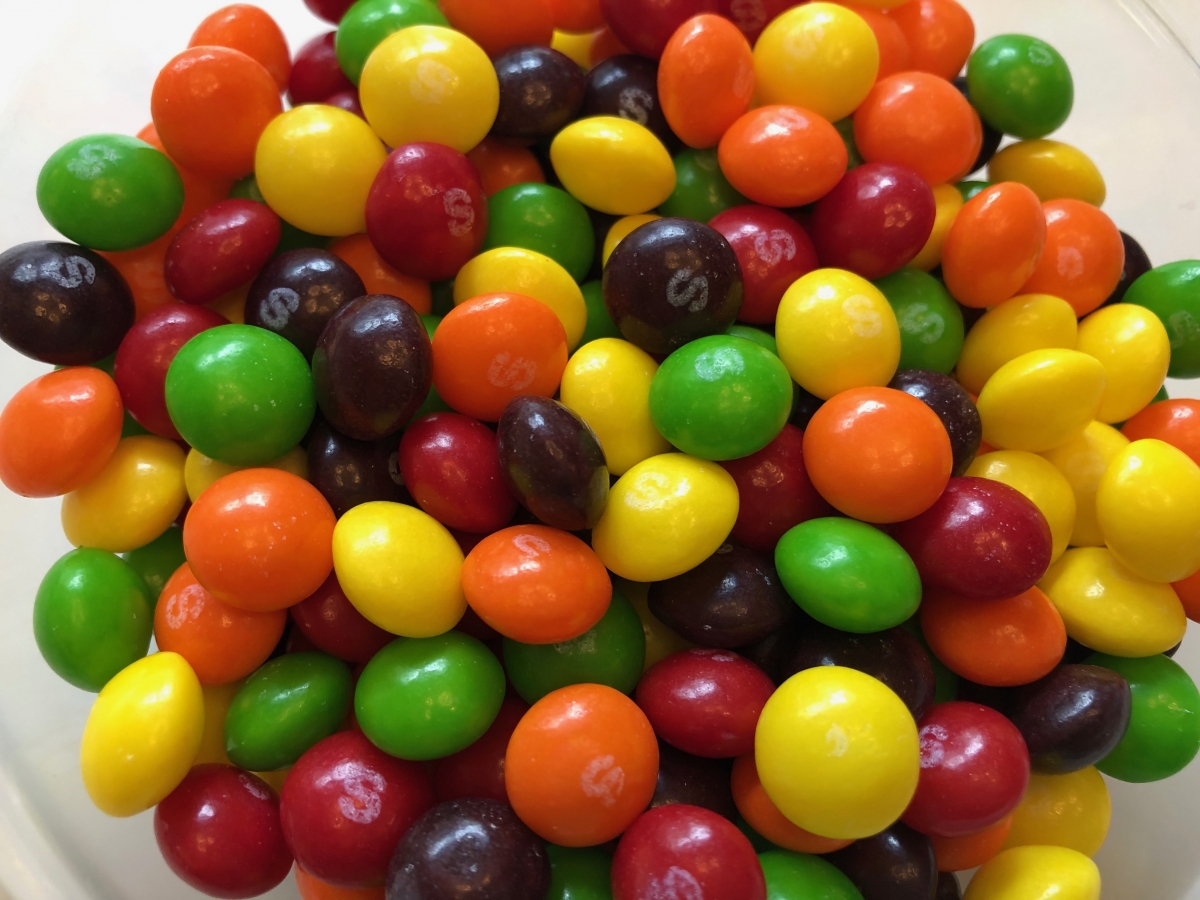
Skittles are a popular choice to hand out for trick-or-treating, as they are considered a safe go-to for those with allergies (and of course, they are delicious!). Because they are coated in food coloring and sugar, they dissolve in liquid easily, altering the water’s color. But how to get the colors to stack on top of one another?
There were scientific theories swirling around this home laboratory that the flavor has something to do with the ability to build a liquid rainbow, but that was quickly debunked. Let’s find out why…
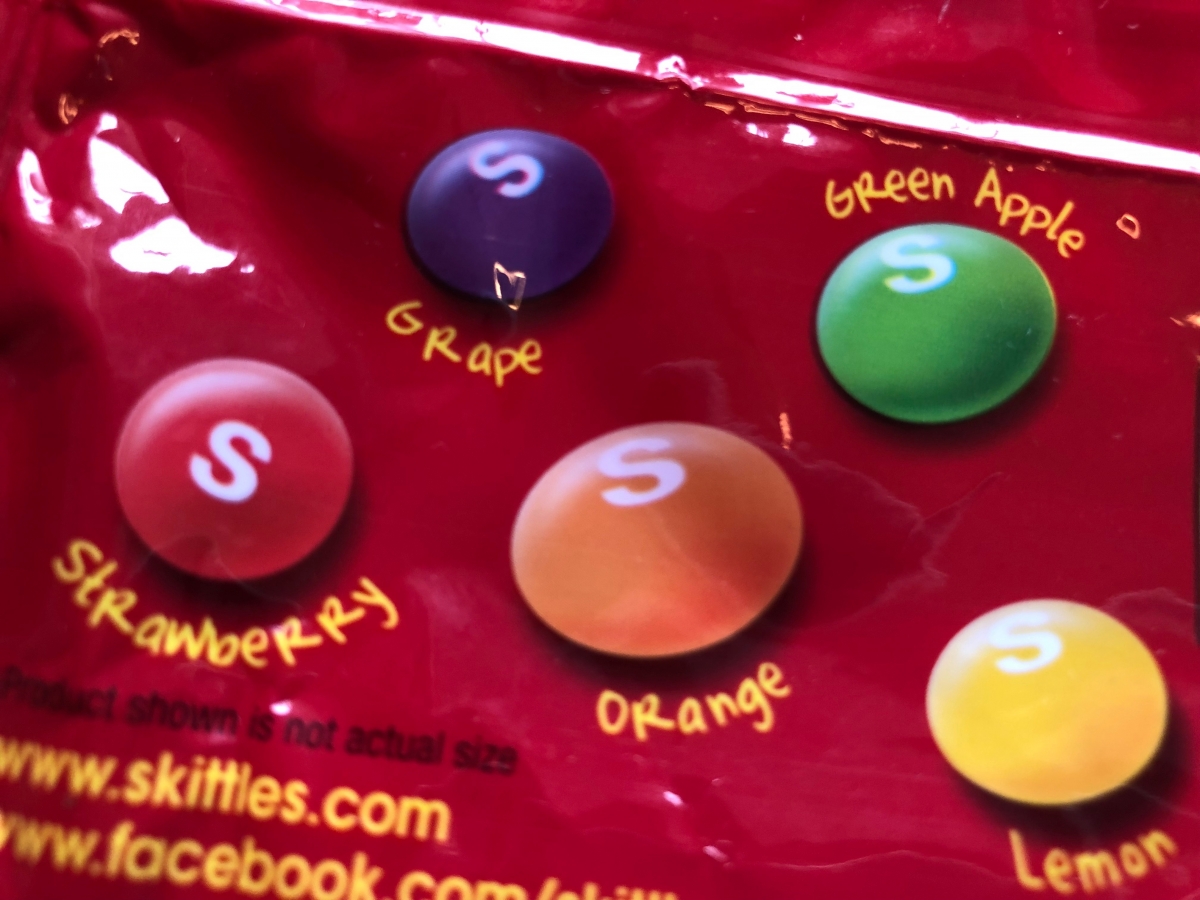
For this experiment, you will need lots and lots of Skittles, very hot water, a tablespoon, five glasses, an eyedropper, and one tall, clear container.
This experiment is an exercise in:
- Color recognition
- Reading
- Counting
- Math
- Measuring
- Liquid density
First, line up the five glasses and label each with a color.
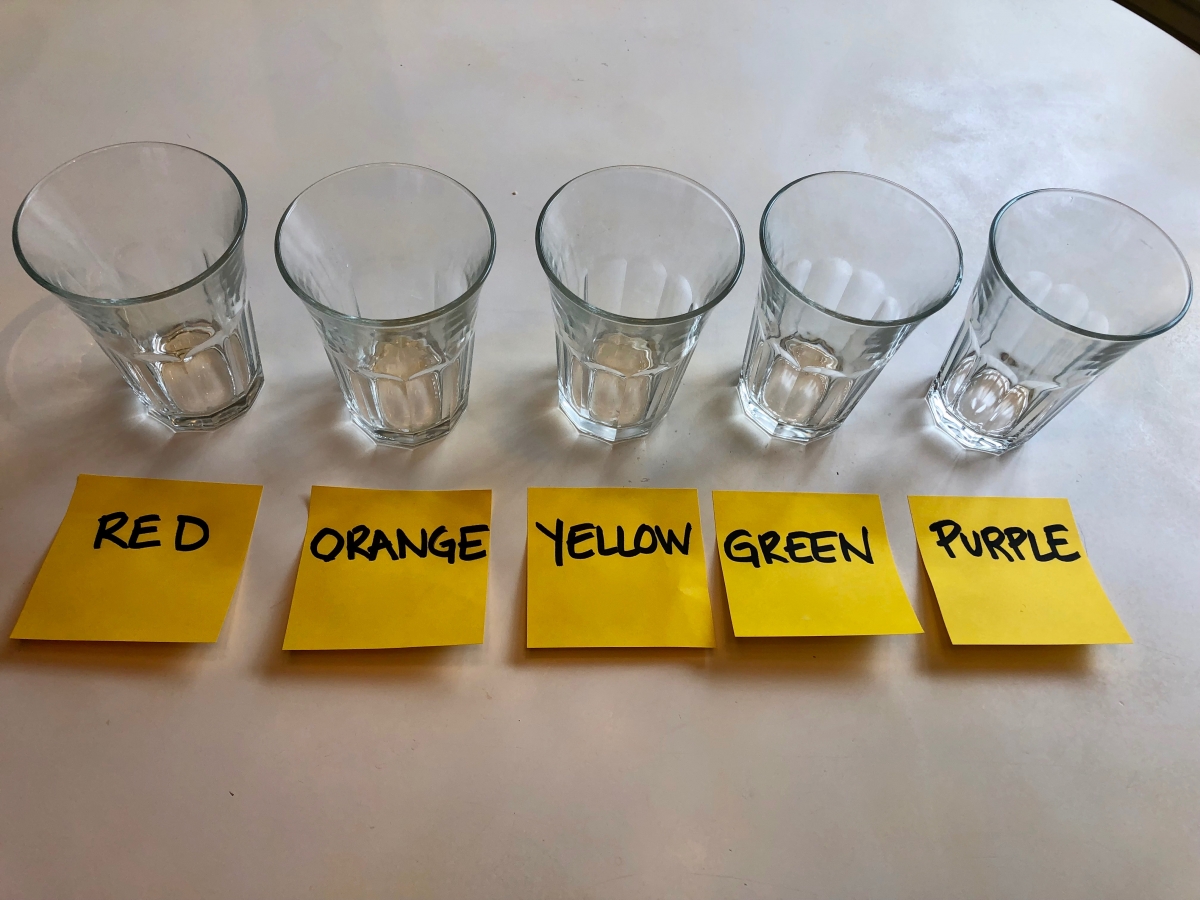
Begin with red, and count out only two Skittles. Now have your mathematicians double the totals for orange, then yellow, then green, and lastly, purple. (Spoiler alert: red=2, orange=4, yellow=8, green=16, purple=32.)
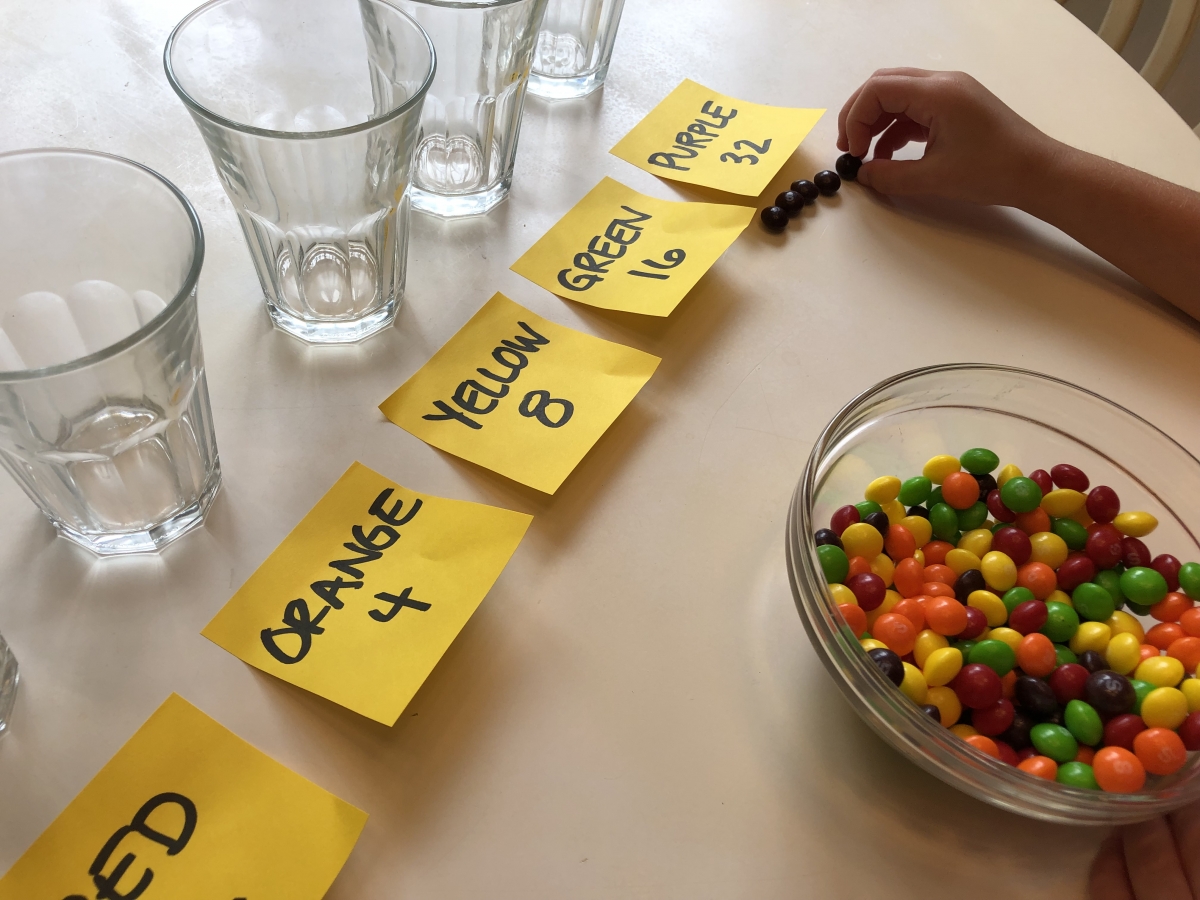
With your very hot water, add two tablespoons to each glass.
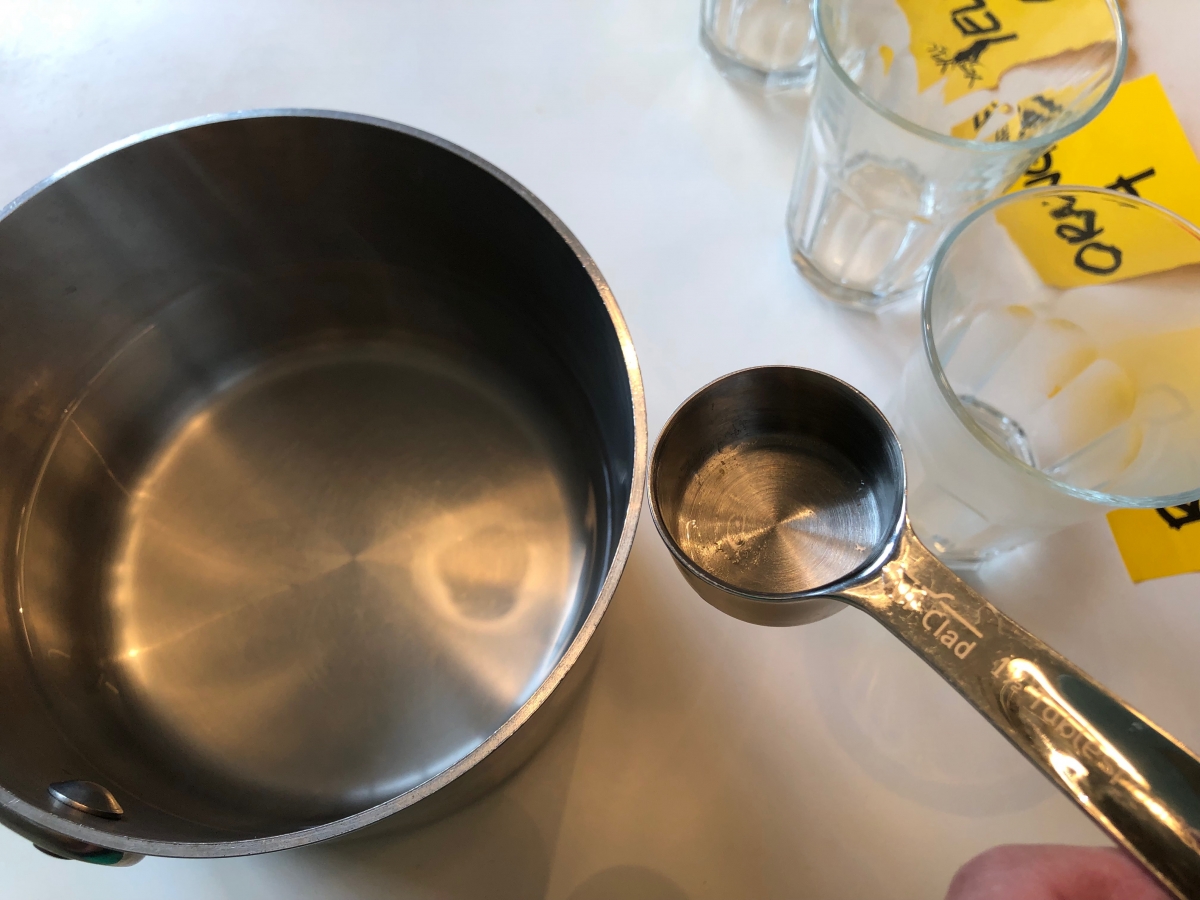
Drop in the Skittles to its designated glass.
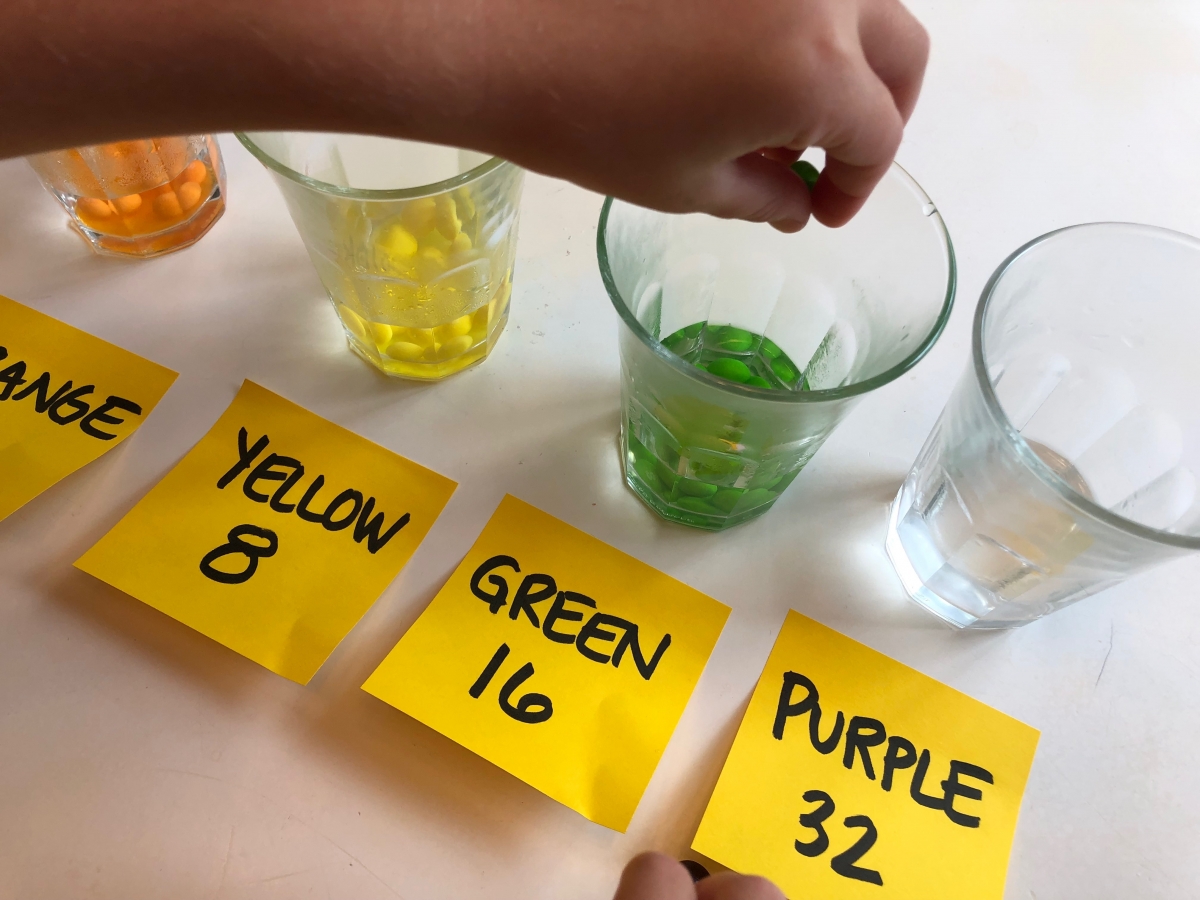
Now begins the waiting game. You must let the Skittles dissolve and allow the sugar solution to come to room temperature. If your Skittles are not dissolving, heat up the water in the microwave.
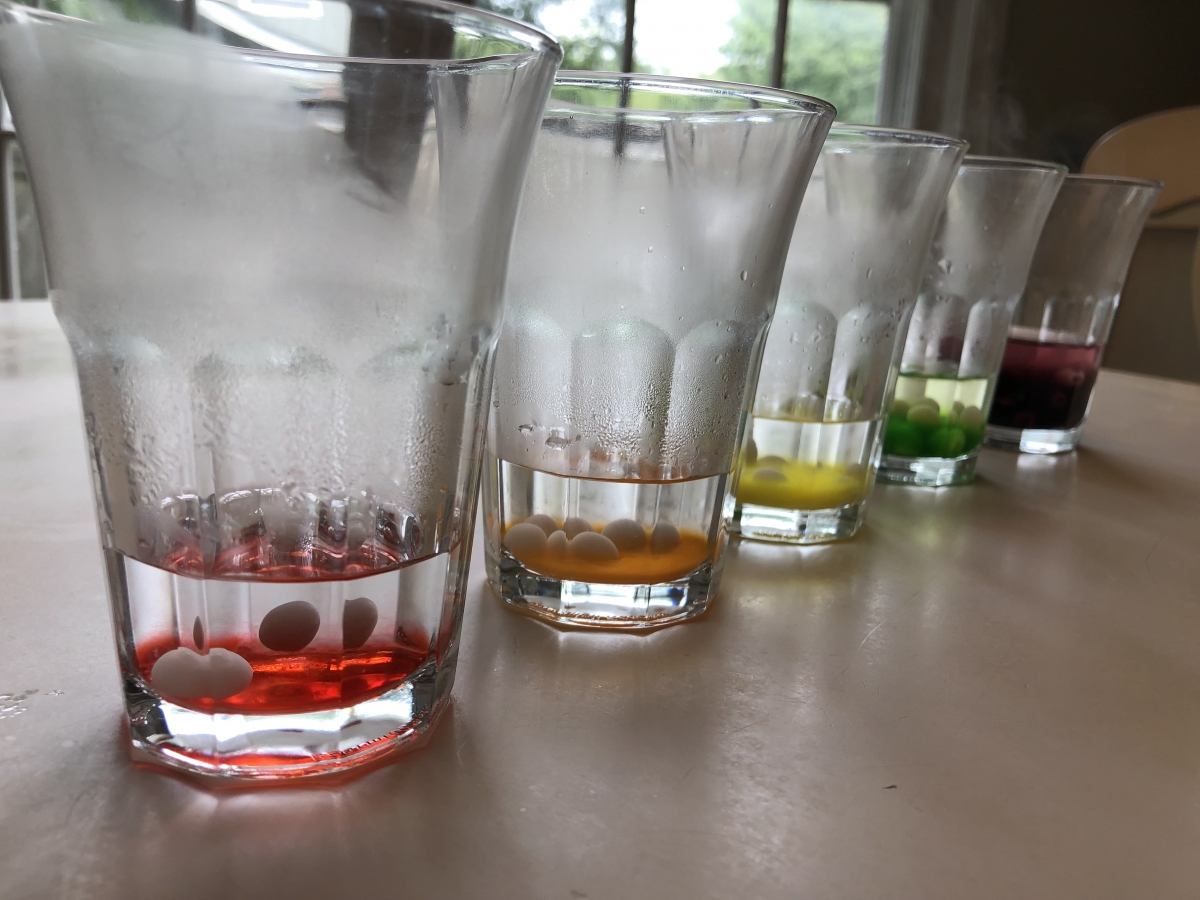
Once the liquid solutions are room temperature, grab your clear container. Using an eyedropper or pipette, slowly drip the purple grape sugar water into the bottom of the container. This takes patience, but once you begin adding the other colors, your little scientists will understand why.
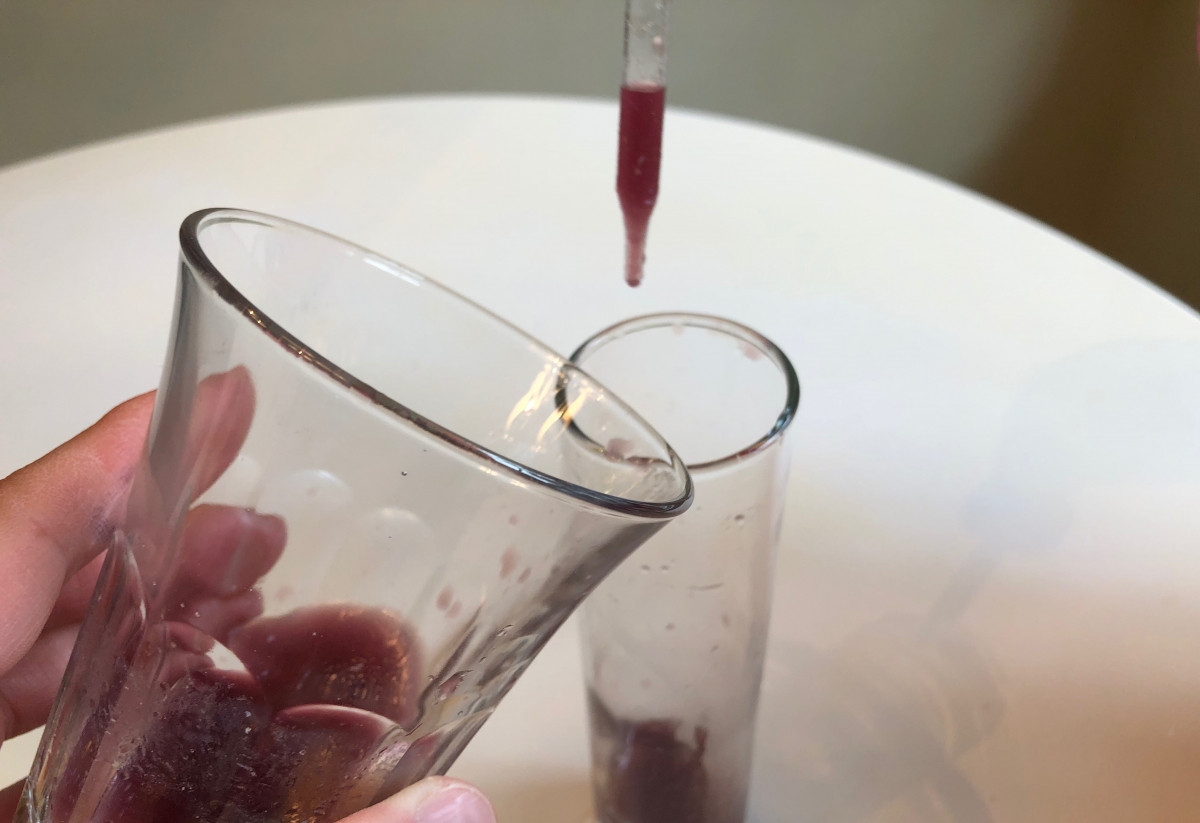
Begin to add the green apple sugar water. This is only successful if you use the eyedropper to run the liquid down the sides of the container.
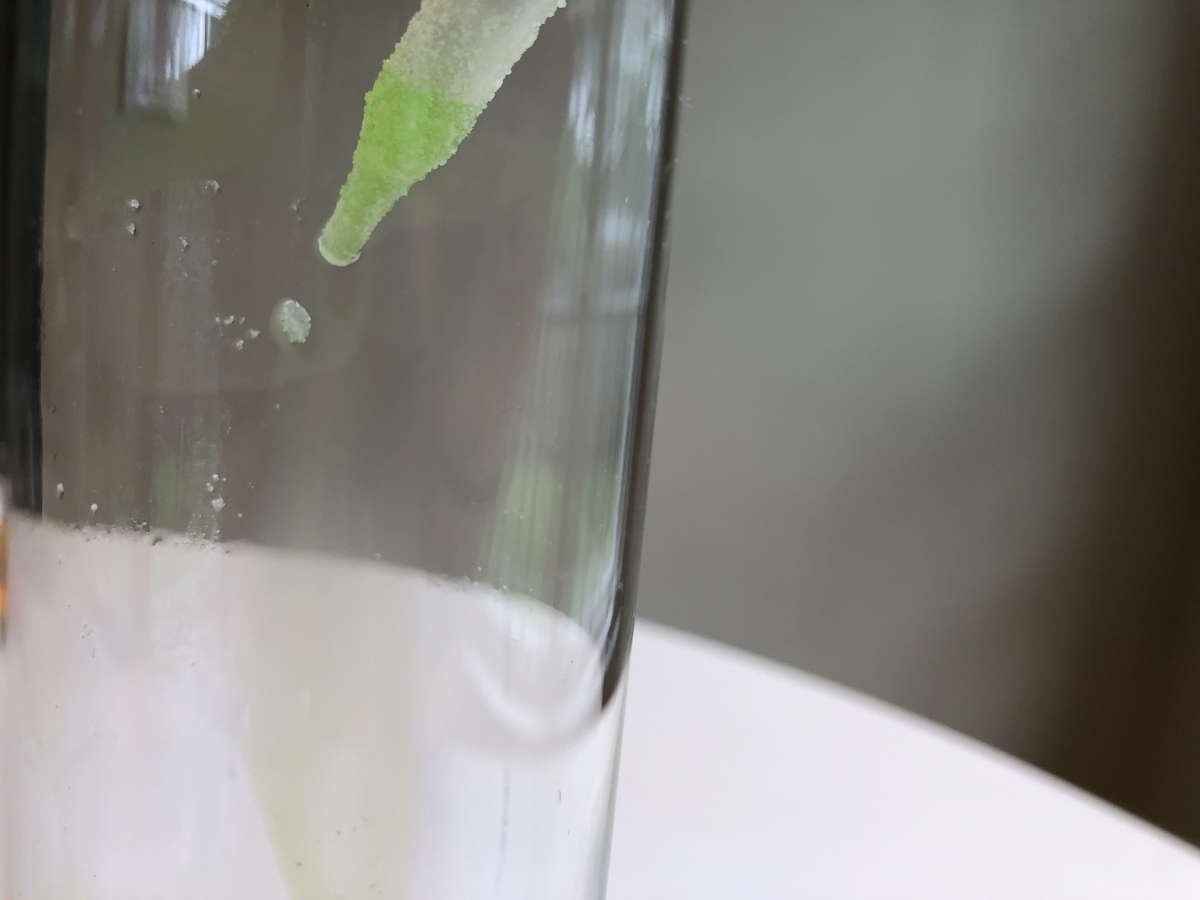
S-L-O-W is the name of the game when adding additional colors. If you dump in the colors, you will end up with a brown mess (see: surface tension).
What is left is a taste-the-rainbow tower of liquid wonder! Carefully bring it over to the sunlight to clearly see the layers.
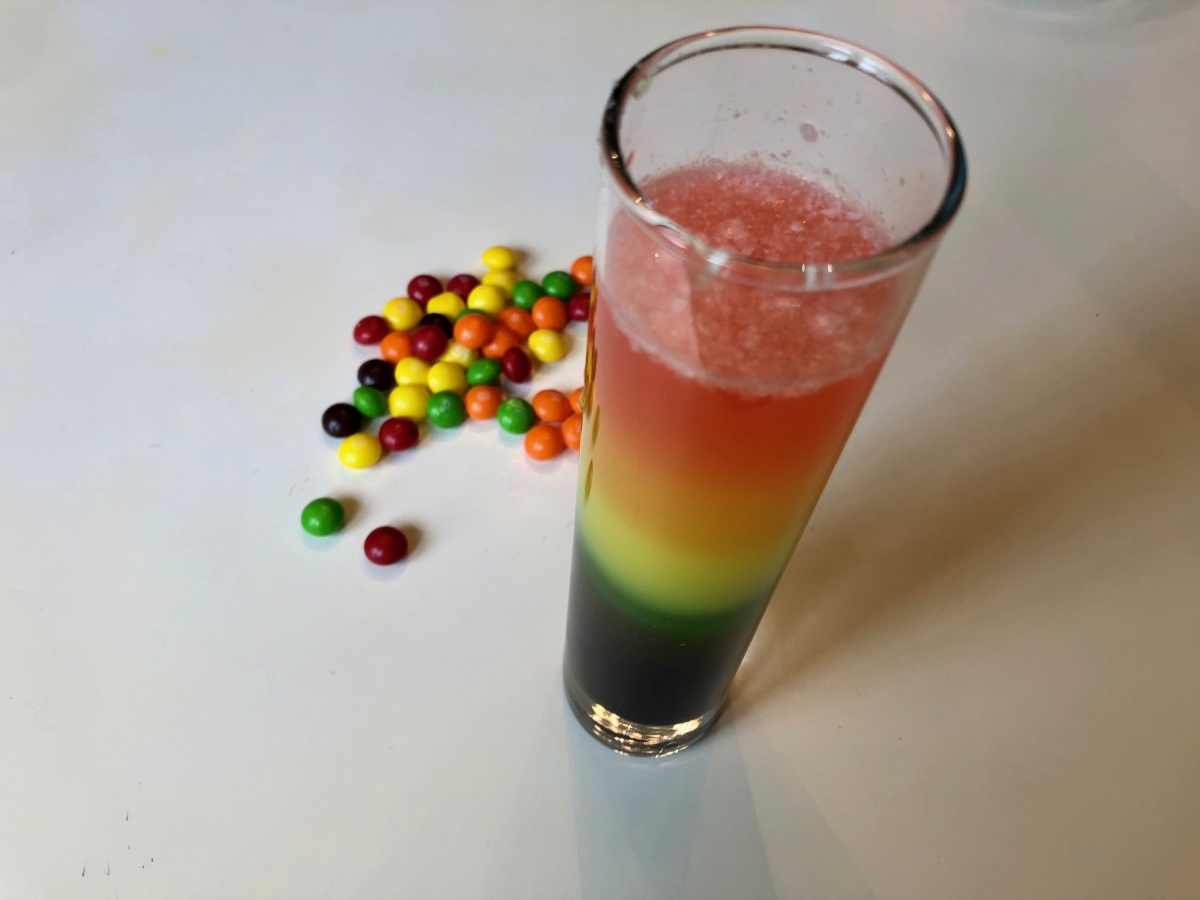
The secret here is density. Mass measures how much “stuff” is in an object or liquid, and density is a measure of how tightly that “stuff” is packed together.
In this case, the same amount of water was used for each sugar solution. The variable was the number of Skittles added. The mass (two tablespoons of water) stayed the same but we increased the density (Skittles) for each solution.
The more sugar molecules in the purple grape made for more dense water, so that went on the bottom of our layered rainbow. By the time we got to the red strawberry, it easily floated on top.
Skittles science…pretty sweet!
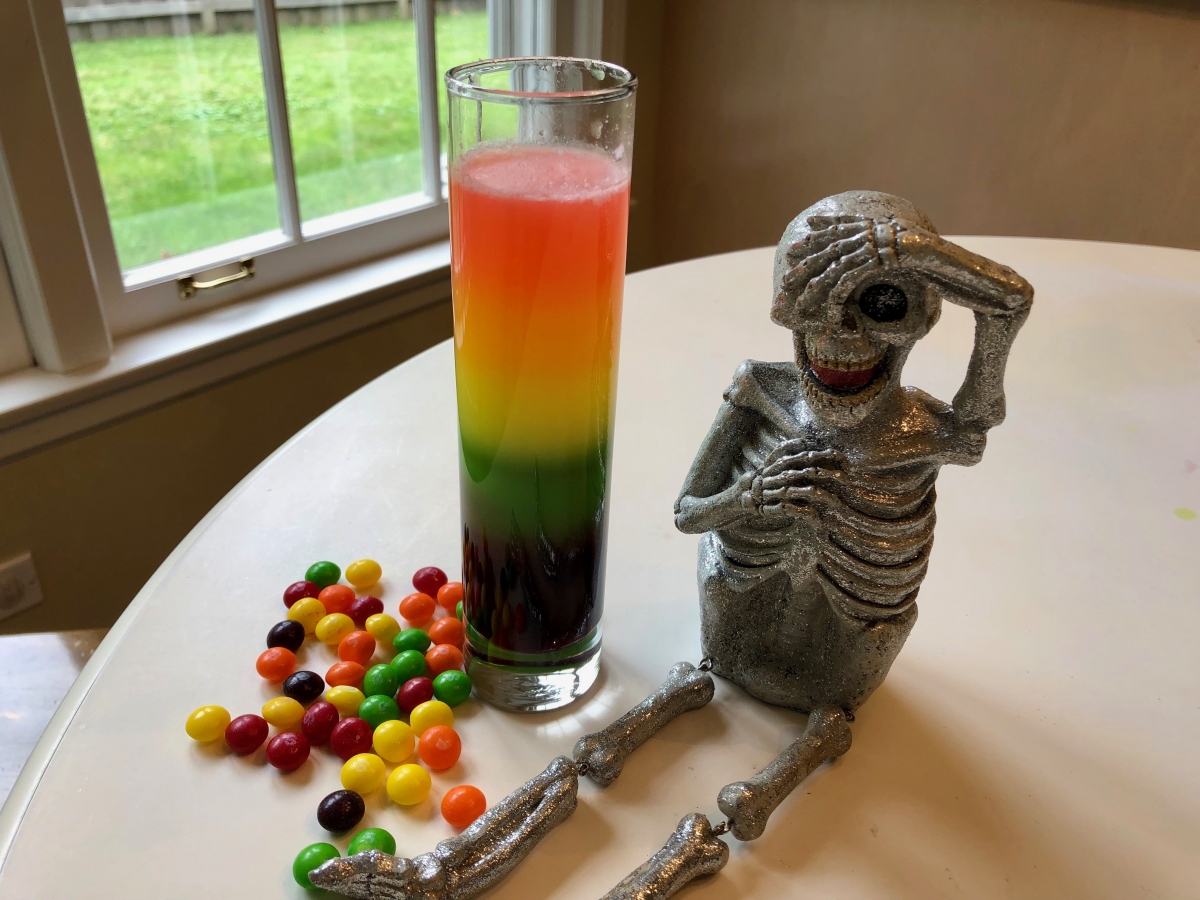
Save it for later!

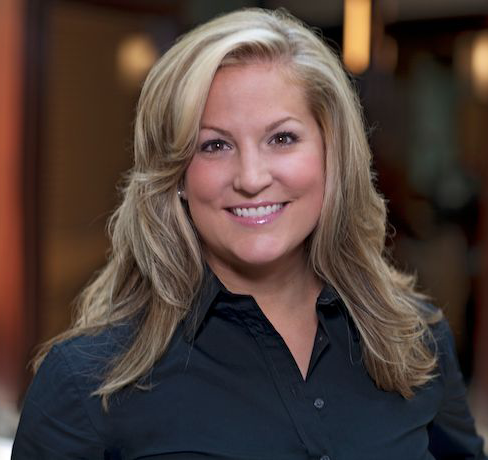
About the Author: Stacy Flannery Armed with a practical approach, Stacy Flannery shares encouraging tips and “we-are-all-in-this-together” humor for raising kids in today’s world of high expectations. Flannery, an experienced magazine editor turned mompreneur, never imagined her two toughest bosses would be under three feet tall.
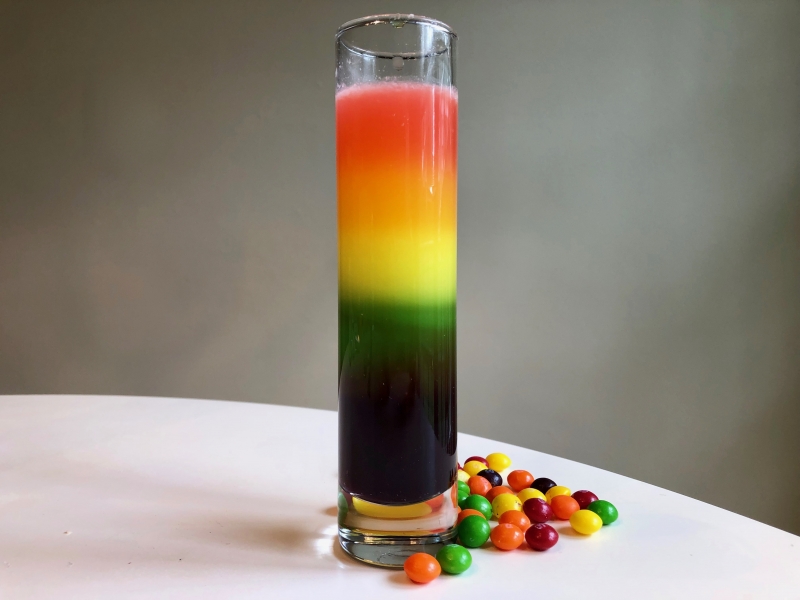
DIY Leftover Halloween Candy Experiment!